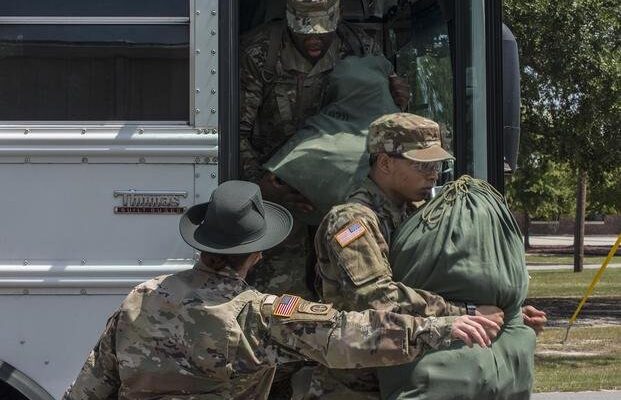If you want to join the military, you will first want to start training for the pre-enlistment fitness tests. This is just the basics of your initial preparation and involves working on your running, rucking, swimming, calisthenics and strength training. These will depend on what job and branch of service you want to do in the future.
Many people will visit the recruiter first, get the paperwork rolling and then start training physically. This places you on the recruiter/Delayed Entry Program timeline, but instead of doing that, consider joining once you hit a certain level of physical performance and activity. Here is why:
- Recruiters will take you more seriously.
- Your chances of typical overuse injuries are decreased.
- Depending on the job you want in the military, physical fitness may be a big part of the preselection screening process that may take months to prepare.
You will want to be in the best physical shape possible before heading to the recruiter’s office. Start by setting up a training schedule with regular workouts focusing on cardiovascular endurance and muscular strength. You can mix in a progressive running program, add rucking as well and start by building a foundation of calisthenics. Then advance into weight training for strength, as there may also be significant load-bearing in your near future during initial military training.
Make sure to increase the intensity and duration of your workouts gradually over time to improve your fitness level steadily. And don’t forget to incorporate rest days into your schedule to allow your body to recover and prevent injury.
Here are some classic workout articles to help you get started with all of the above:
- Starting a Running Program for Military Prep
- Running with Military Purpose
- Rucking Basics to Get Started
- Calisthenics Training — Some Classics
Depending on your military goals, you may need a higher level of fitness if considering jobs such as Army Rangers, Special Forces, Marines, Navy or Air Force Special Warfare/Special Ops. Adding more time with longer distance running, swimming and strength training is important to not only getting accepted into these training programs but graduating, too. Check out these articles for more details:
- Incorporate Pacing, Interval Training and Hill Sprints to improve your overall speed and stamina.
- Swimming/Diving Preparation: Technique and endurance are key. Incorporate treading and different strokes into your training routine and aim to increase the distance you can swim without stopping.
- Strength and Resistance Training: Focus on exercises that target major muscle groups, such as squats, deadlifts, push-ups and pull-ups. Even though push-ups and pull-ups are calisthenics, your first repetition is a strength exercise, but maxing out a two-minute fitness test is an endurance exercise. Start with strength.
This will require many weeks of increasing the weight and intensity of your strength workouts progressively to build muscular strength and endurance. However, with consistent training and dedication, you will be well-prepared to ace those pre-enlistment fitness tests and set yourself up for meeting and exceeding the standards within the military while decreasing the risk of injury.
If you are looking for specific training programs, start with the links above, but continue your research by looking through the Military.com Fitness Section. You can also use the links in the bio below and contact me with more specific questions, and I am happy to assist in directing you toward achieving your goal.
Stew Smith is a former Navy SEAL and fitness author certified as a Strength and Conditioning Specialist (CSCS) with the National Strength and Conditioning Association. Visit his Fitness eBook store if you’re looking to start a workout program to create a healthy lifestyle. Send your fitness questions to stew@stewsmith.com.
Want to Learn More About Military Life?
Whether you’re thinking of joining the military, looking for fitness and basic training tips, or keeping up with military life and benefits, Military.com has you covered. Subscribe to Military.com to have military news, updates and resources delivered directly to your inbox.



